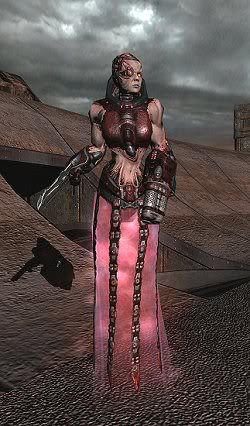I noticed this while browsing for Quake4 pics. Looking at the shadow of the iron maiden, it only exists for the top half of her body. The lower-half appears to be kinda translucent but is apparently treated as non-existant from the shadowing. Presumably care could be taken by segmenting the lower half of the body and assigning different values for shadow intensity but that's a very hackish way.
There's a lot of talk on soft shadowing but how bout' accounting for translucency? Is there currently any shadowing techniques taking care of translucency "automatically" or do they require special efforts on artists and programmers side? Or is it due to processing power requirements that makes it unfeasible for now?

There's a lot of talk on soft shadowing but how bout' accounting for translucency? Is there currently any shadowing techniques taking care of translucency "automatically" or do they require special efforts on artists and programmers side? Or is it due to processing power requirements that makes it unfeasible for now?



